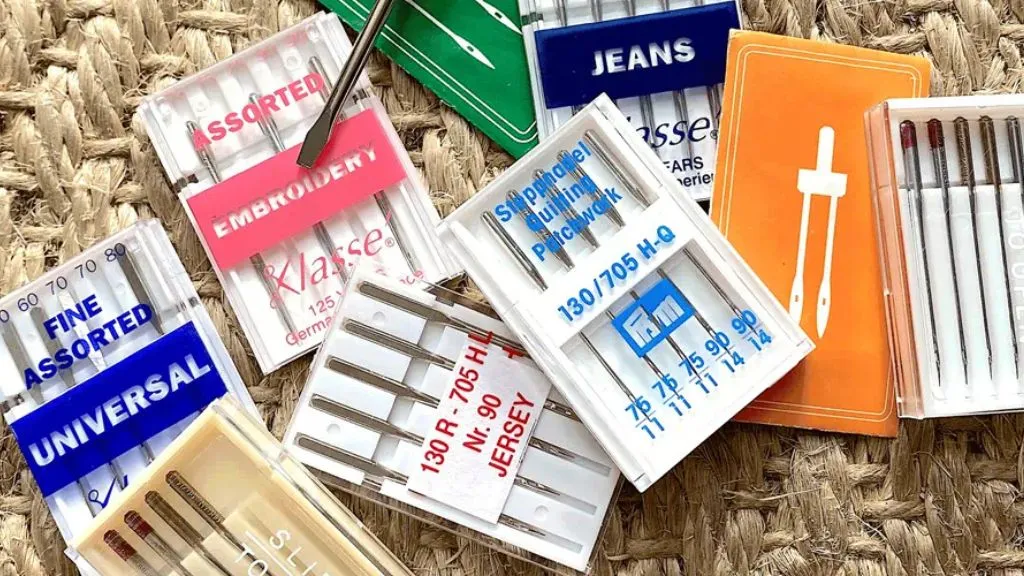
Needles are indispensable tools in sewing, crafting, and medical applications, but their variety can be overwhelming. Each type of needle is designed for a specific purpose, ensuring precision, efficiency, and safety.
Using the wrong needle can lead to damaged materials, ineffective stitching, or discomfort. Understanding the different types of needles and their uses is essential for achieving optimal results in any task. In this article, we’ll explore the various types of needles, their unique features, and their applications in everyday and specialized activities.
What Is the Use of Needles?
You can identify a needle with its thin, polished metal shaft. It is usually sharp at one end with a hole at its other end. The thread used for stitching is run through this hole. Knitting needles are, however, different. They are thin sticks made of metal or plastic and have a pointed end and no holes at their other end.
Parts of a Needle
In the anatomy of a needle, it has 5 parts:
- Shank: The head of a needle is called a shank. It sits in the socket of the sewing machine.
- Blade: The blade is used to determine the size of the needle.
- Shaft: The body of a needle is called a shaft. It has an eye at its end through which the run thread is to be run.
- Point: The tip of the needle is referred to as a point and it varies according to the type of needle.
- Scarf: The flattened part of the needle near the eye is called the scarf of the needle.
Different Types of Needles & thier Features
You must select needles based on the type of fabric you are stitching. Selecting the correct fabric, stabilizer, and thread is as important as selecting the correct type of needle. Here comes the different kinds of needles and the different sizes they are available in.
1. Universal Needle
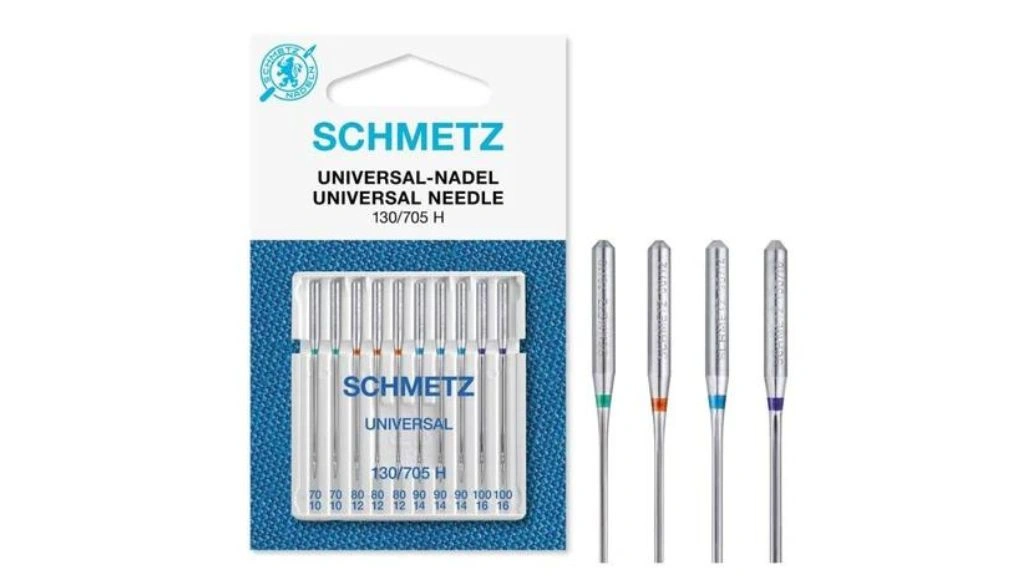
- The point of the universal needle is slightly rounded.
- It is perfect for woven textiles like cotton.
- For knitted fabrics, universal needles may be sharp.
2. Ballpoint Needle
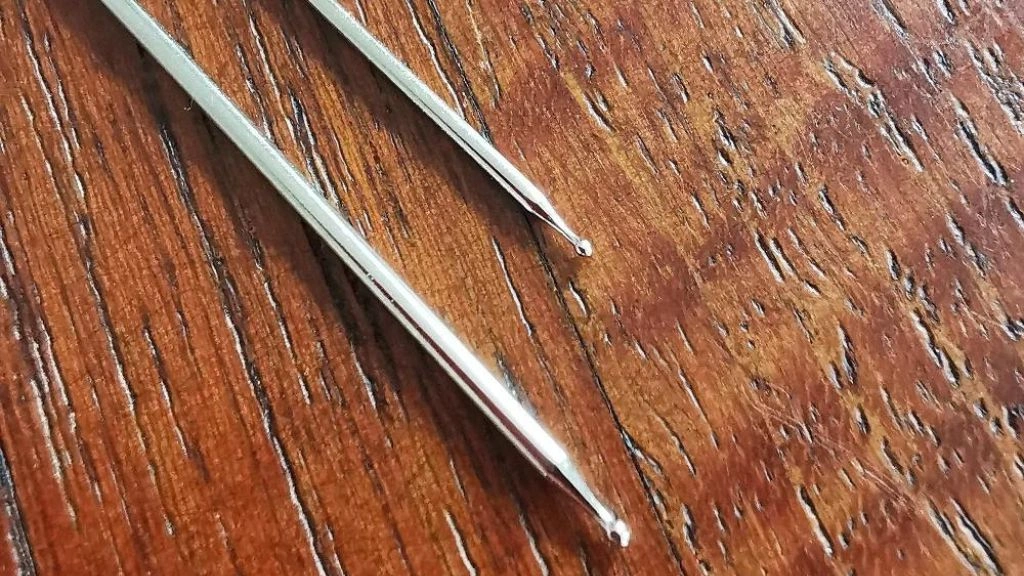
- The point of the needle is rounded so that the needle can easily pass through fabric ends rather than pierce them.
- This needle is perfect for knitted fabrics.
- Ballpoint needles can also be used for spandex and heavy knits.
3. Quilting Needle
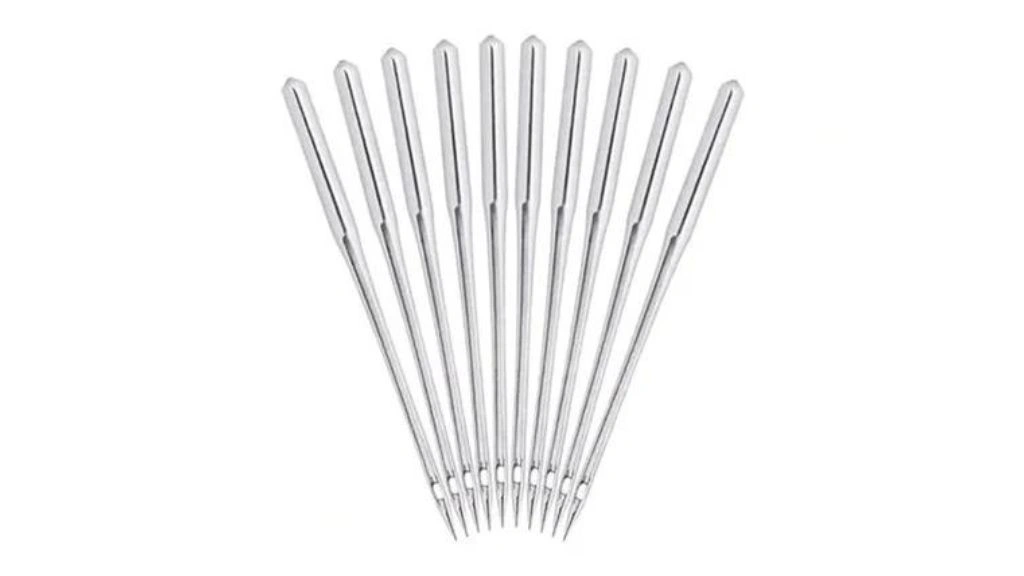
- Quilting needles have a tapered point so that they can sew through intersecting seams and thick layers.
- For machine quilting, quilting needles are a perfect choice.
- These needles can also be used for piercing.
4. Sharp Needle
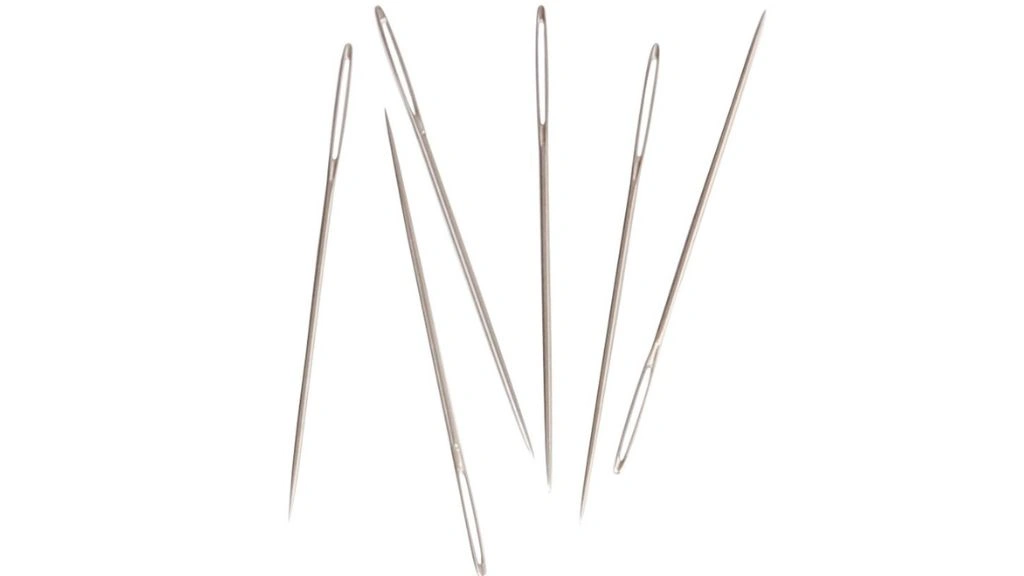
- Sharp needles have narrow shafts with a sharp point to pierce woven fabrics.
- It is suitable for microfiber, lightweight faux suede, silk, and chintz.
- You can also use sharp needles for heirloom sewing or other types of topstitching.
5. Leather Needle
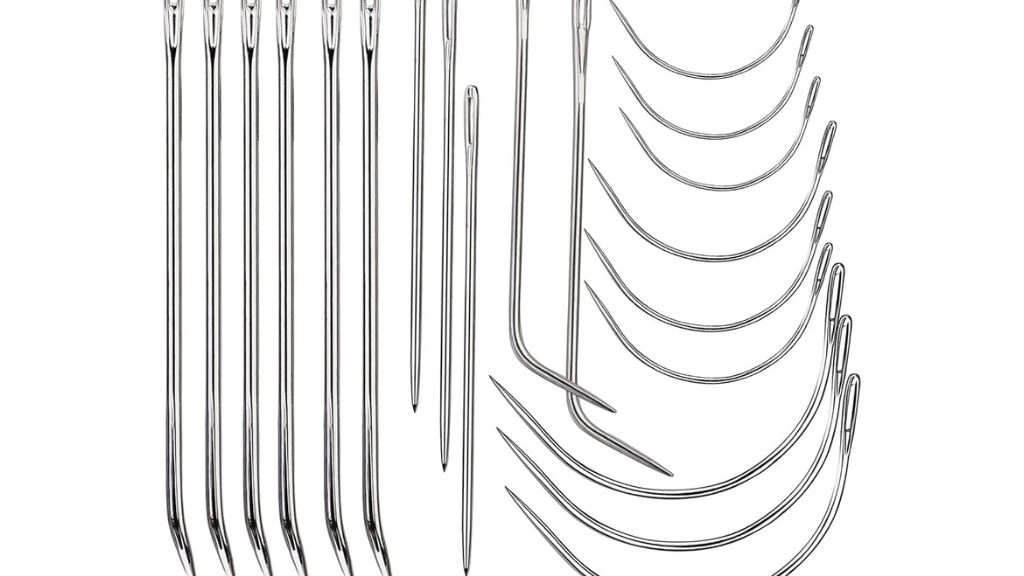
- A leather needle has a wedge-shaped point and it will leave permanent holes in the fabric.
- It is ideal for sewing thick non-woven fabric, heavy faux suede, vinyl, suede, and leather.
- Do not backstitch as it will perforate the fabric. Instead, you can tie the ends of the thread.
- These needles must not be used for knits.
6. Denim Needle
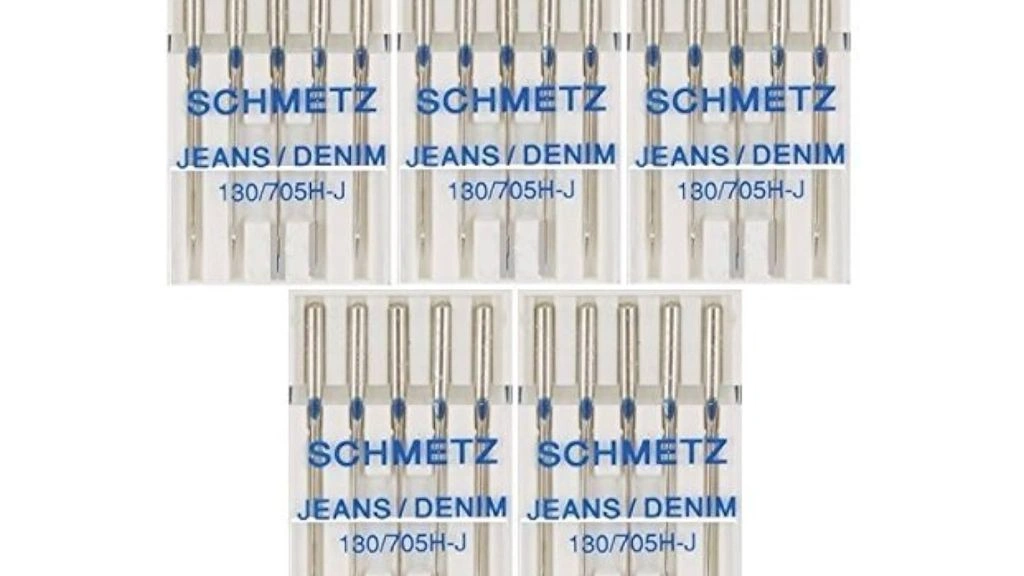
- These needles have a string shaft and a sharp point.
- It can stitch through multiple layers without breaking.
- You can use denim needles for heavy, tightly woven fabrics like a duck, canvas, and denim.
7. Topstitching Needle
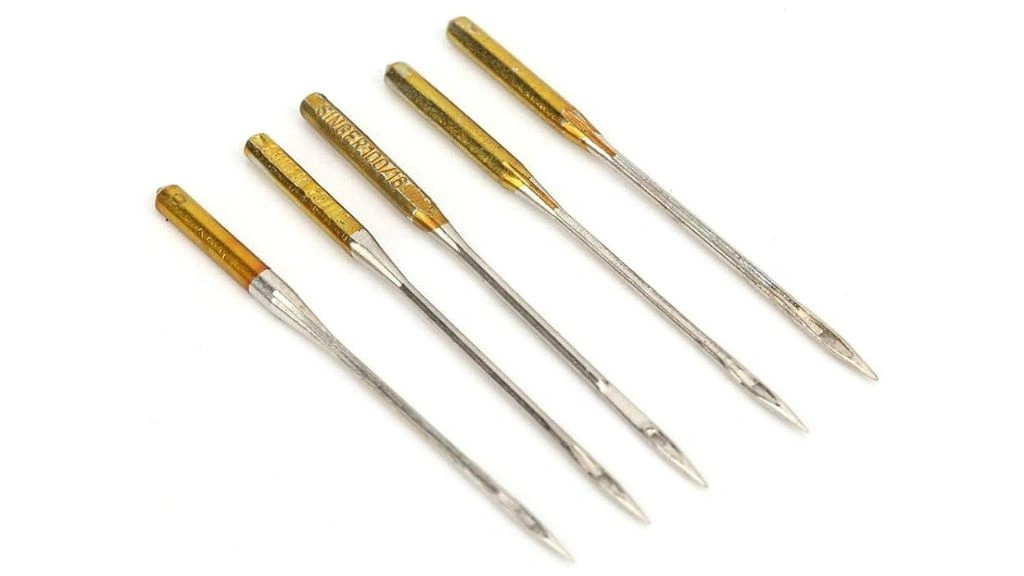
- Needles used for topstitching have a sharp point, a large groove, and an extra-large eye.
- These are used for embroidery threads, heavy decorative threads, or even 2 strands of all-purpose threads.
8. Stretch Needle
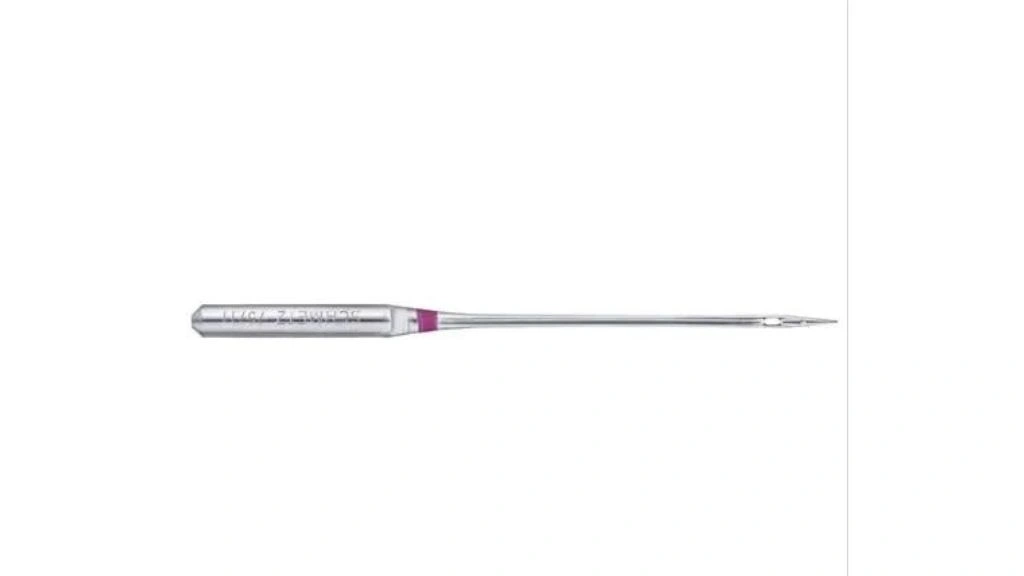
- Stretch needles are used for lightweight knits such as lycra, silk jersey, or any other fabric with high elasticity.
- Using a ballpoint needle on these fabrics is not advisable as it may skip stitches, so it’s better to switch to stretch needles.
9. Serger Needle
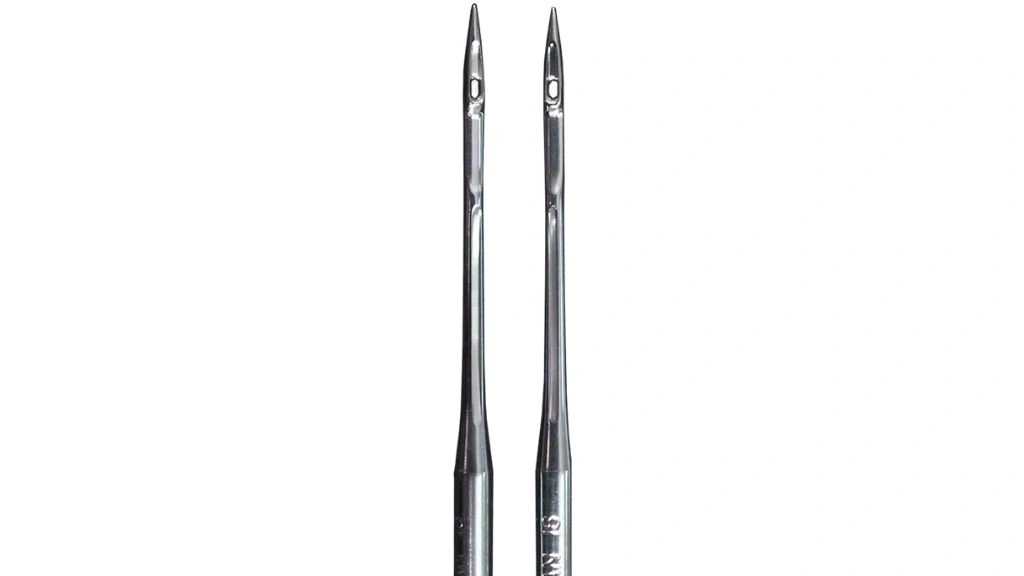
- Serger needles are specifically used for overlock machines.
- It has a sharp point and can be used on all fabrics.
10. Embroidery Needle
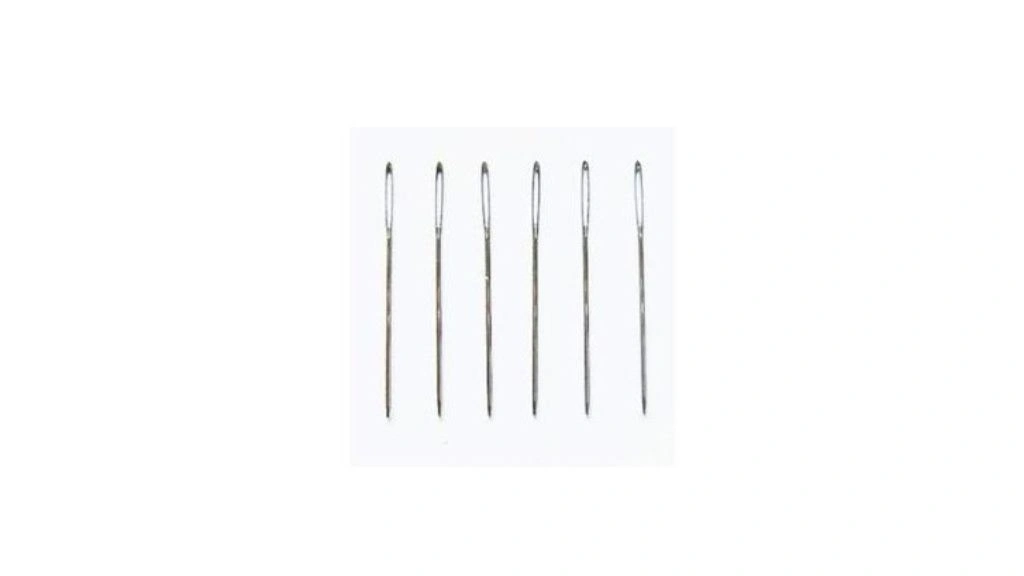
- These needles are used for machine embroidery.
- Specialty threads, acrylic, and rayon need these types of needles.
11. Metallic Needle
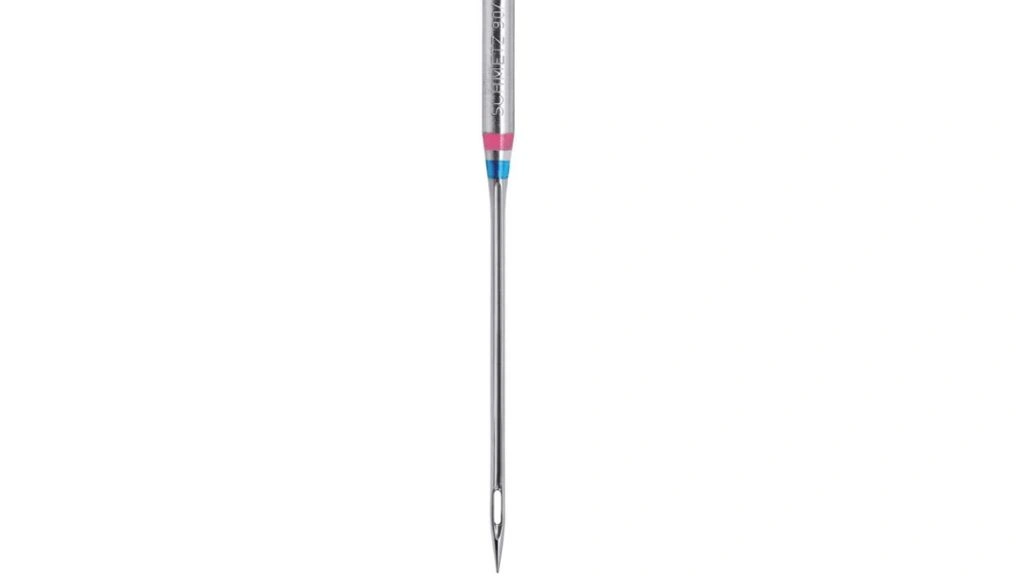
- These needles have a sharp point, a large groove scarf, and an extra-large eye.
- This needle is used for metallic threads and monofilament threads.
12. Wing Needle
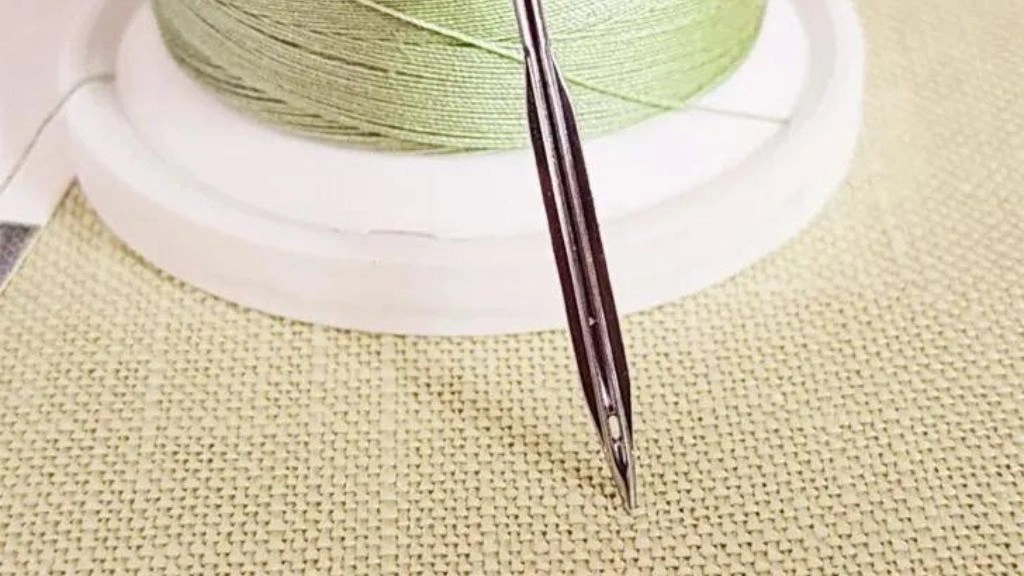
- These needles have flared “wings” on either side of their shaft.
- This type of needle is used for stitching heirlooms and for decorative stitches on linen and Batiste.
13. Twin Needle
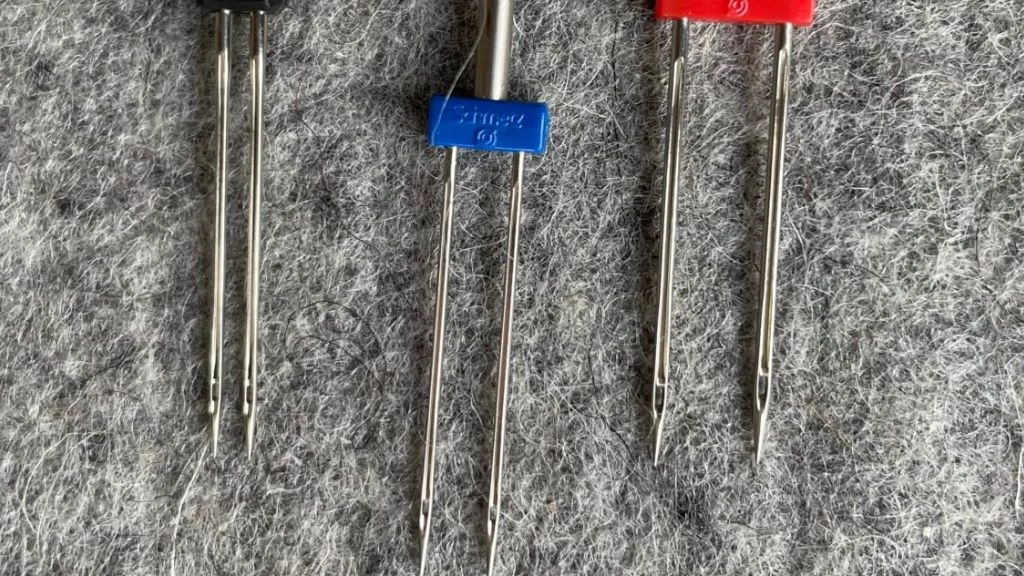
- These needles have a single shaft that connects 2 needles together.
- It is used to obtain perfectly parallel stitches.
- Parallel stitching can be found in decorative stitching and jeans.
14. Triple Needle
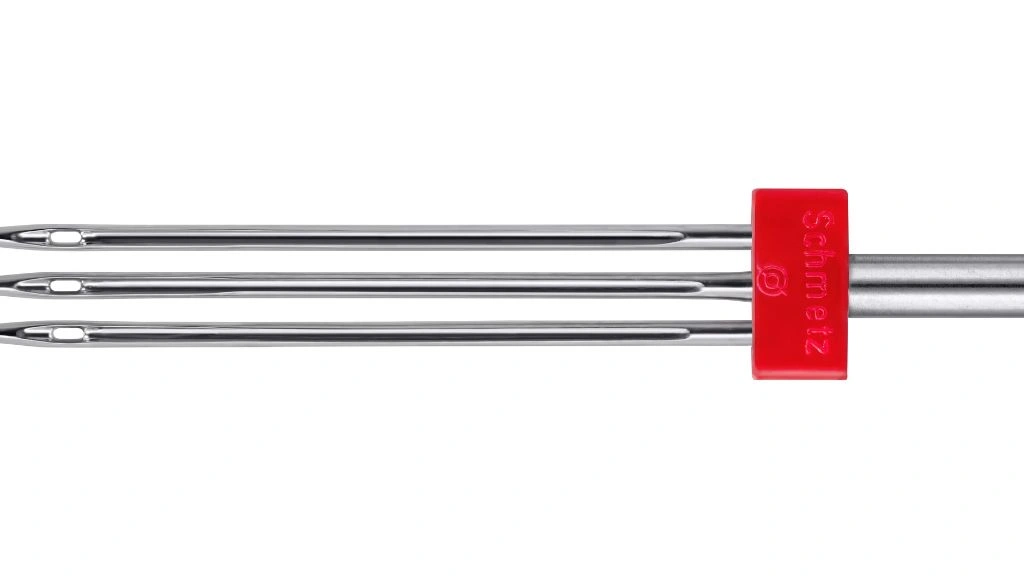
- These needles are a type of needle that is universal and is similar to the twin needle but with a single shaft to connect 3 needles.
- It needs a triple needle-compatible machine to work successfully.
15. Spring Needle
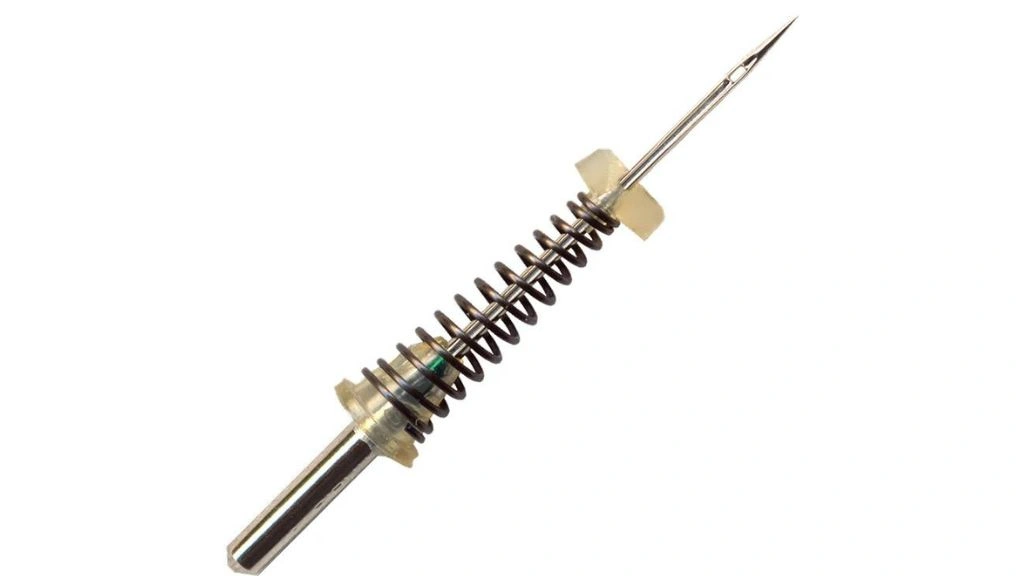
- These needles are a type of needles to be used for monogramming, embroidery, and free-motion sewing.
- It has a wired, coiled shaft that acts as a presser foot. You can depress it and release the fabric from the needle.
16. Metafil Needle
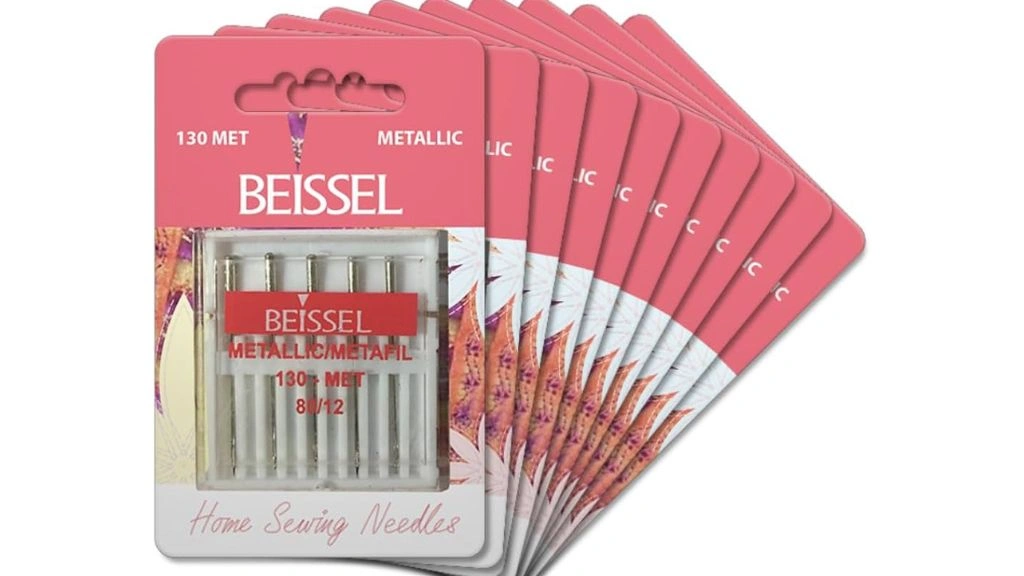
- These needles are used to embroider or sew on knitted or woven fabrics with rayon or metallic threads.
- These types of needles have an extra-large eye so that fancy threads do not split or thread while being run through it.
Sizes of Different Types of Needles Based on Fabric
Sizes of needles are as important as selecting the right needle and fabric. Here’s a table with the different types of needles, their sizes, and types of fabric you can sew with them.
| Sl. No. | Types of Fabric | Types of Needle | Size of the Needle |
| Lightweight to Sheer fabrics (Micro denier, microfiber, Voile, Organza, Georgette, Chiffon, and Batiste) | Regular point needles | 9/70 or 11/80 |
| Lightweight fabrics (Tissue Faille, taffeta, Silk, Handkerchief Linen, Gauze, Crêpe de Chine, Charmeuse, Chambray, and Challis) | Regular point needles | 11/80 |
| Medium-weight fabrics (Velvet, Terry, Taffeta, Synthetic Suedes, Satin, Poplin, Linen, Flannel, Corduroy, Chintz, Chino, Brocade, and Broadcloth) | Regular point needles | 14/90 |
| Medium to heavy-weight fabrics (Woolens, Ticking, Gabardine, Fake fur, Drapery fabrics, Damask, and Coating) | Regular point | 16/100 or 18/110 |
| Canvas and denim | Jeans/Denim | 16/100 |
| Lightweight to sheer knits (Tricot, Spandex, Single knit, Jersey) | Ballpoint | 10/70 or 12/80 |
| Medium to heavy-weight knits (Sweater knit, Sweatshirt, and Double knit) | Ballpoint | 14/90 |
| Specialty fabrics (Buckskin, Suede, and Leather) | Wedge point | 14/90 or 16/100 |
Sizes of Needles Based on Different Types
Here’s another table based on the different types of needles and the fabric, needle size, and thread that you can use those needles on.
| Sl. No. | Types of Needles | Size of the Needle | Type of Fabric | Types of Thread |
| Universal needle | 70 (10) | Delicate silk, sheers, voile | Gutermann Sew-All |
| 80 (12) | Light wool, rayon, poplin, shirtings | Gutermann Sew-All | ||
| 90 (14) | Linen, medium-heavy fabrics, calico | Gutermann Sew-All | ||
| 100 (16) | Heavy fabric, bag making, upholstery | Gutermann Sew-All | ||
| 110 (18) | Upholstery and extra-heavy fabric | Gutermann Sew-All and Gutermann Extra Upholstery | ||
| Sharp needles | 70 (10) | Microfiber and voile | Gutermann Sew-All |
| 80 (12) | Patchwork, microfiber, and shirtings | Gutermann Sew-All | ||
| 90 (14) | Topstitching | Gutermann Sew-All | ||
| Ballpoint needles | 70 (10) | Tricot and light knits | Gutermann Sew-All |
| 80 (12) | Lacoste and interlock | Gutermann Sew-All | ||
| 90 (14) | Double knit and medium-heavy knits | Gutermann Sew-All | ||
| Stretch needles | 75 (11) | Elasticised fabrics and light lycra | Gutermann Sew-All |
| 90 (14) | Elasticised fabrics, elastic-heavy lycra | Gutermann Sew-All | ||
| Jeans needles | 90 (14) | Tightly woven fabrics and denim | Gutermann Extra Upholstery |
| 100 (16) | Furnishings, vinyl, and heavy denim | Gutermann Extra Upholstery | ||
| Leather needles | 90 (14) | Suede and leather | Gutermann Extra Upholstery and Gutermann Sew-All |
| 100 (16) | Not for synthetic leather | Gutermann Extra Upholstery and Gutermann Sew-All | ||
| Metafil needles | 80 (12) | Decorative sewing on different fabrics | Gutermann Extra Upholstery and Gutermann Sew-All |
| Quilting needles | 80 (12) | Quilts made from polyester, wool, or cotton with a wadding center | Gutermann Natural Cotton |
| Embroidery needles | 75 (11) | Decorative sewing on lightweight textiles | |
| 90 (14) | Decorative sewing on heavy textiles | |||
| 10 | Twin needles | various | Mostly decorative sewing on multiple fabrics |
To Conclude
Remember that choosing the right needle for your stitching work is as important as choosing the right fabric, sewing machine, and size of the needle of your chosen type. Hope our table on what needle goes for which fabric helped you in finding the right needle for that baby sweater you have in mind.






